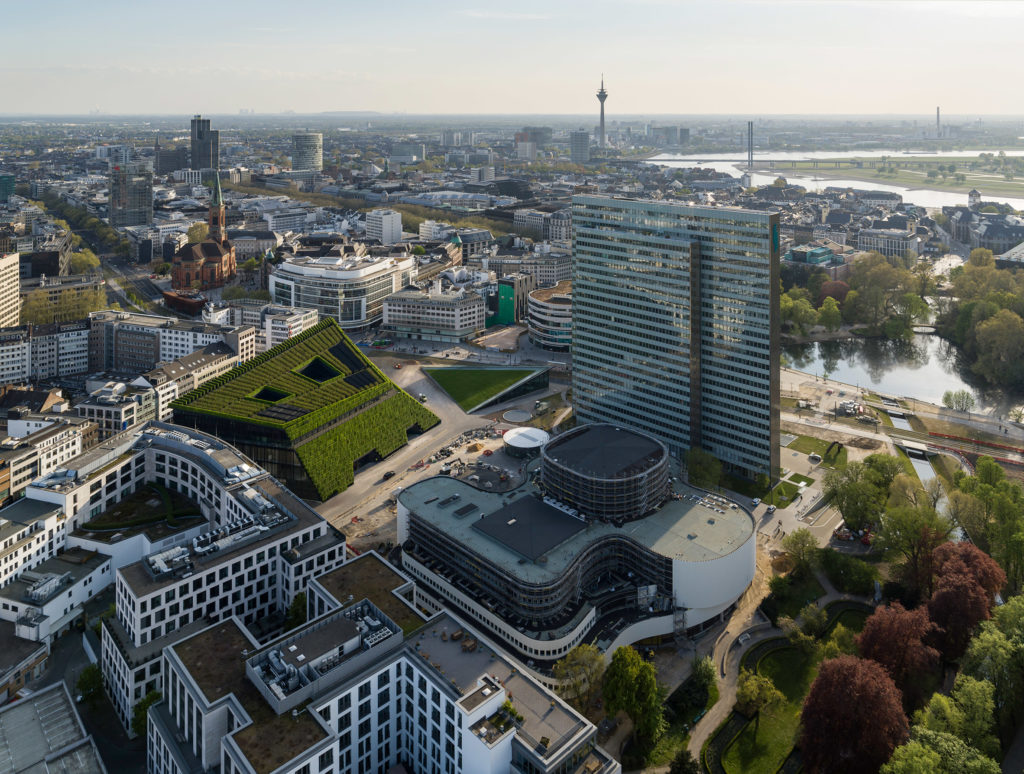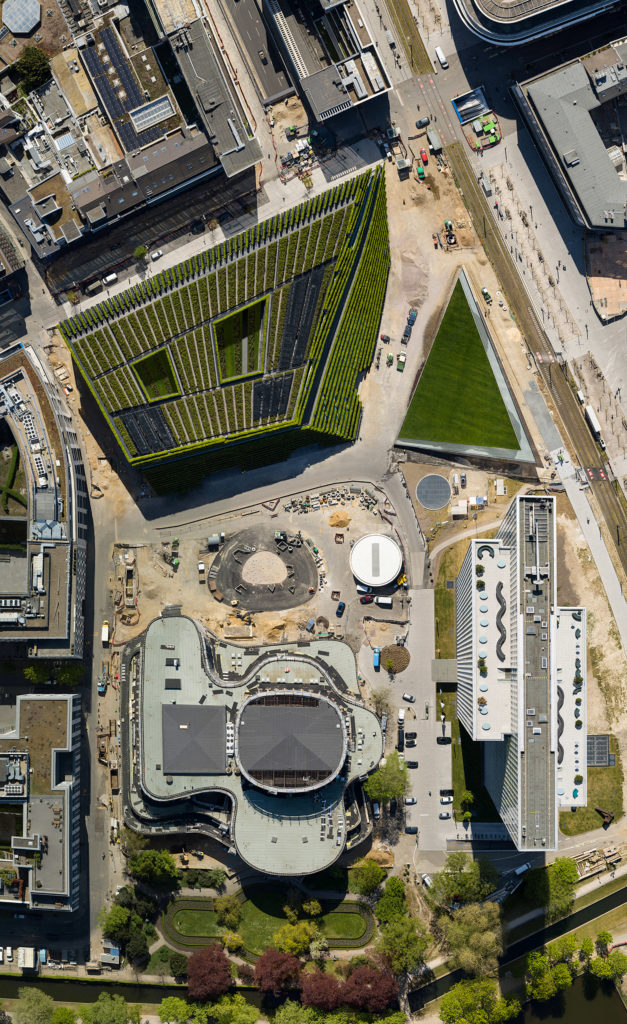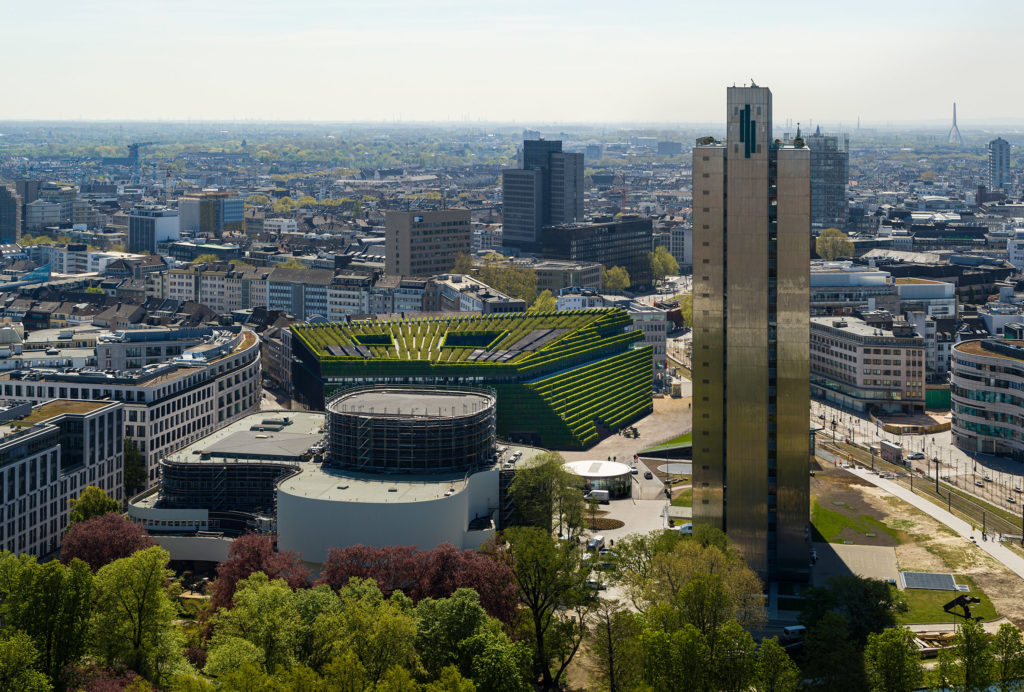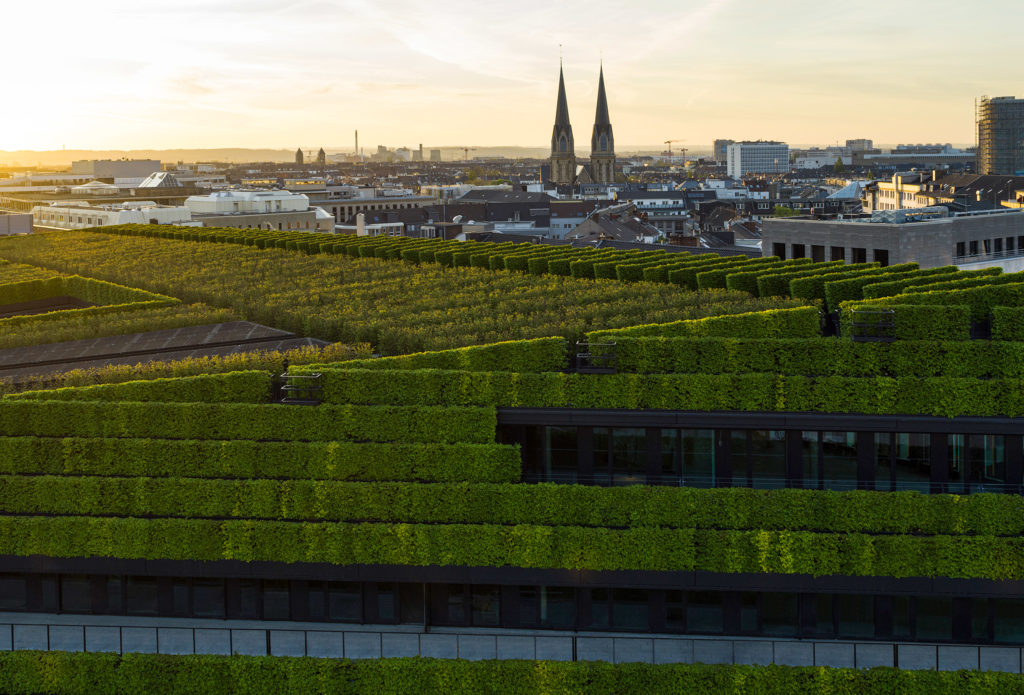Over 30,000 plants and 5 miles of hornbeam hedges cover the newly completed Kö-Bogen II commercial and office building by German architecture firm Ingenhoven Architects. Located in Düsseldorf, the verdant structure features Europe’s largest green façade.

Ingenhoven Architects is a practice known as one of the pioneers of sustainable architecture. Their Kö-Bogen II marks the completion of an extensive urban renewal project on the Gustaf-Gründgens-Platz in the Hofgarten district of Düsseldorf. It sits where there was once an elevated motorway.
According to Ingenhoven Architects, the building “…represents a paradigm shift: from an urban perspective, it signals a departure from the automotive era and a turn towards people-oriented planning. And with Europe’s largest green façade, it offers an urban response to climate change.”

The five-story complex has the appearance of a large, green hill, with two angular sloping façades. The smaller building is topped with a publicly accessible lawn and contains restaurants and shops. They face each other in a composition inspired by landscape art.
Together they form a dynamic entrance to Gustaf-Gründgens-Platz, opening up views of iconic post-war buildings, the Dreischeibenhaus tower (1960), and Schauspielhaus theatre (1970). As stated by the architects, “Kö-Bogen II is a contemporary response to these two historical landmarks, without competing with them.”


Two of the building’s walls and its roof are entirely covered in a native evergreen shrub known as hornbeam that, according to Ingenhoven Architects, provides an ecological benefit equal to 80 fully grown deciduous trees. This cladding also includes irrigation and drainage systems and was developed in association with the Beuth University of Applied Sciences in Berlin.

While Kö-Bogen II injects color into Düsseldorf, its greenery actually improves the city’s microclimate by reducing urban heat, binding carbon dioxide, storing moisture, mitigating noise, and supporting biodiversity. According to Ingenhoven Architects, giving back as much green as possible to the city is a task they’ve been working on for decades. This hulking, green structure marks a major step forward in the creation of sustainable architecture in urban environments.
All images via Dezeen
The post Europe’s Largest Green Façade Has Been Completed in Germany appeared first on Sustainability Topics.
from Sustainability Topics
Commentaires
Enregistrer un commentaire